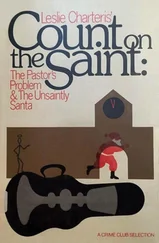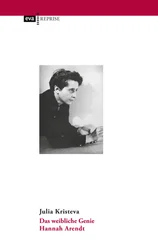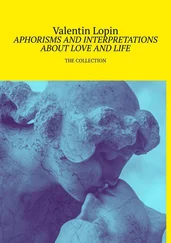25. Life , 18:8, CW 1:160.
26. Jérôme Gratien, Glanes, Quelques brèves additions de la main du père Jérôme Gratien à la première biographie de Thérèse d’Avila par le père Francisco de Ribera, presented by Fr. Pierre Sérouet (Laval: Carmel de Laval, 1998).
27. Letter 98, to María Bautista, December 30, 1575, CL 1:245.
28. Testimonies , 22:2, CW 1:397.
29. Life , 22:6, CW 1:194.
30. Way , 24:3, 5, CW 2:129, 130.
31. Exod. 4:30.
32. John 1:23.
33. Medit ., 1:1, CW 2:216.
34. Medit ., 1:8, CW 2:219 (adapted).
35. Life , 25:11, CW 1:217.
36. See Mino Bergamo, L’anatomie de l’âme: De François de Sales à Fénelon (Grenoble: Jérôme Millon, 1997), 135 sq: “essential foundation,” “fond essentiel.”
37. Martin Heidegger, Being and Time: A Translation of Sein und Zeit, trans. Joan Stambaugh (New York: State University of New York Press, 1996), vol. 2, chap. 2, § 57, p. 253: “The caller, too, remains in a striking indefiniteness…leaves not the slightest possibility of making the call familiar.”
38. Heidegger, Being and Time , vol. 2, chap. 2, § 55, p. 251: “Vocal utterance is not essential to discourse…a ‘voice’ of conscience,…which can factically never be found, but ‘voice’ is understood as giving-to-understand.”
39. Life , 22:8, CW 1:194–95.
40. Life , 22:1, CW 1:191 (adapted).
41. Life , 22:16, CW 1:199.
42. VII D , 3:13, CW 2:442.
43. Testimonies , 5, CW 1:386.
44. Ps. 119:32: “Dilatasti…”
45. IV D , 2:5, CW 2:324.
46. Testimonies , 39, CW 1:409.
47. Heidegger, Being and Time , vol. 2, chap. 2, § 56, p. 252: “The call [like the babbling voice] does not say anything…has nothing to tell.” Cf. Jean-Louis Chrétien, The Call and the Response , trans. Stephen E. Lewis (New York: Fordham University Press, 2004).
48. VI D , 9:6, CW 2:412.
49. Way , 7:8, CW 2:70.
50. Way , 17:5, CW 2:100.
51. Life , 22:15, CW 1:199.
52. Life , 22:8, CW 1:195.
53. Life , 22:7–10, CW 1:194–96.
54. VI D , 6:3, CW 2:392.
55. Life , 22:10, CW 1:195.
56. Ibid.
57. VI D , 11:3, CW 2:422.
58. VI D , 6:10, CW 2:395.
59. I D , 1:1, CW 2:283.
32. ACT 3: HER “LITTLE SENECA”
1. John of the Cross, “Commentary Applied to Spiritual Things,” in The Collected Works of St. John of the Cross , trans. Kieran Kavanaugh and Otilio Rodriguez (Washington, D.C.: Institute of Carmelite Studies, 1973), 734.
2. Letter 194, to Ambrosio Mariano, May 9, 1577, CL 1:33.
3. John of the Cross, Ascent of Mount Carmel , book 2, chapter 12, trans. and ed. E. Allison Peers (Tunbridge Wells, Kent: Burns & Oates, 1983), 103: “all the detachment of the exterior senses…”
4. Ibid., 106.
5. Ibid.
6. Testimonies , 59:11, CW 1:428–29.
7. John of the Cross, “More Stanzas Applied to Spiritual Things on Christ and the Soul,” in Collected Works , 722.
8. John of the Cross, Letter 33, October — November 1591, in Collected Works , 706.
9. John of the Cross, “The Living Flame of Love,” in Collected Works , 717.
10. VII D , 4:15, CW 2:450.
11. Francis Poulenc, Dialogues of the Carmelites , libretto, original text and English translation (Melville, N.Y.: Ricordi and Belwin Mills, 1957, 1959). (This cannot be consulted; trans. LSF.)
12. Sacra congregatio pro causis sanctorum, Positio super causae introductione servae Dei Teresiae Benedictae a Cruce (in saeculo Edith Stein) monialis professae ordinis carmelitarum discalceatorum (1891–1942) , Rome, 1983, 322.
13. Isa. 53:5.
14. Edith Stein, Getsamtausgabe, 3 (1933–1942) (Freiburg: Herder, 2000–2001), 373, quoted by Cécile Rastouin, Edith Stein. Enquête sur la source (Paris: Cerf, 2007). Edith Stein’s Collected Works have been issued by the Institute of Carmelite Studies (Washington D.C.: ICS, 1992/2003) in an eleven-volume series involving various translators and editors.
15. Stein, The Hidden Life , in Collected Works , vol. 4, 92.
16. VII D , 4:14, CW 2:450.
17. Allusion to Edith Stein’s works, The Science of the Cross ( Collected Works , vol. 6), dealing with John of the Cross, and The Hidden Life ( Collected Works , vol. 4), hagiographic meditations and spiritual texts.
18. VII D , 3:13, CW 2:442.
19. VII D , 3:12, CW 2:442.
20. John of the Cross, “Song of the Soul that Rejoices in Knowing God Through Faith,” stanza 8, in Collected Works , 724.
21. John of the Cross, “More Stanzas Applied to Spiritual Things on Christ and the Soul,” in Collected Works , 722.
22. Testimonies , 42, CW 1:410–11.
23. John of the Cross, “First Romance: On the Gospel. Regarding the Most Blessed Trinity,” in Collected Works , 724–25.
24. Letter 297, to Jerome Gratian, June 10, 1579, CL 2:195.
25. John of the Cross, “Romance 2,” in Collected Works , 726.
26. Testimonies , 52, CW 1:414.
27. Life , 38:9–11, CW 1:333–34.
28. Testimonies , 14, CW 1:392.
29. VII D , 2:7, CW 2:435–36.
30. John of the Cross, “Spiritual Canticle,” in Collected Works , 712. With regard to John of the Cross and Teresa of Avila, see the work of Fr. Michel de Goedt: Le Christ de Thérèse de Jésus (Paris: Desclée-Fleurus, 1993), 169–82; and Le Christ de Jean de la Croix , (Paris: Desclée, 1993).
31. Testimonies , 52, CW 1:414.
32. Ibid.
33. Testimonies , 49, CW 1:413.
34. Thomas Aquinas, “Quidquid recipitur ad modum recipientis recipitur,” Summa Theologiae 1a, q. 75, a. 5; 3a, q. 5.
35. John of the Cross, Dark Night of the Soul , book i:4.
36. Testimonies , 31, CW 1:402.
37. Colette, Mes apprentissages , in Œuvres (Paris: Gallimard, 1991), 3:1039: “ la règle qui guérit de tout .”
38. John of the Cross, “The Dark Night,” in Collected Works , 712.
39. Marcelle Auclair, La vie de sainte Thérèse d’Avila (Paris: Seuil, 1950), 188.
40. John of the Cross, “A Gloss,” in Collected Works , 736: “Like a fevered man’s / Who loathes any food he sees.”
41. John of the Cross, Ascent of Mount Carmel , book 1, chapter 13, 58.
42. “Naked faith”: John of the Cross, ibid., book 1, chapter 2: “Luego entra el alma en la segunda Noche, quedándose sola en desnuda fe.” The English version drops the adjective: “The soul at once enters into the second night, and abides alone in faith.” (John of the Cross, Ascent of Mount Carmel , book 1, chapter 2, 20).
43. Edith Stein, The Science of the Cross , in Collected Works , 6:228: “The actual reality…”
44. Testimonies , 65 (Spanish Relaciones , 6): 9, CW 1:438.
Читать дальше












